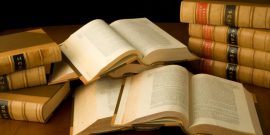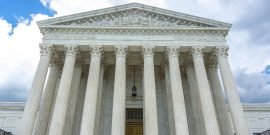Objectives in studying the past matter, because there is a difference between the historian's “what the past is telling us” and original meaning.
Originalism and Corpus Linguistics
This past weekend I attended a BYU conference on Corpus Linguistics at the beautiful Sundance Resort in Utah. It was a great setting to discuss the application of this field to originalist constitutional interpretation.
As I have previously mentioned, corpus linguistics is a part of linguistics which uses databases and sophisticated software to study the “real life” use of language. While people often use dictionaries to determine word meanings, corpus linguistics is often far superior as a means of understanding how people actually use words. One problem of dictionaries is that they fail to give significant information about how common a particular meaning or usage is. Another problem is that they do not typically provide information about phrases or how words are used in the context of other words. Corpus linguistics does all of this. While it is not a fault of dictionaries, dictionaries are also often misused by judges, including Supreme Court justices.
How useful will corpus linguistics be for originalist scholarship? A number of articles are now being produced which suggest that the answer is very useful. While corpus linguistics will not be able to substitute for all other methods of originalist scholarship (which it does not seek to do), it is likely to be an important aspect of such scholarship. One benefit of corpus linguistics is the compilation of databases. The BYU sponsored database (which has not yet been released to the public) has produced a large amount of materials from exactly the relevant period – 1760 to 1799. The database includes three portions – one that is focused on ordinary language documents, another that is focused on legal materials, and a third that is focused on the writings of some significant founders. Another benefit of corpus linguistics is that it allows a variety of searches, including ones that show the “key word in context” and the investigation of other words that are used most often with the word one is investigating.
A recent paper written by Utah Supreme Court Justice Thomas Lee and James Phillips sought to use corpus linguistics to shed light on some originalist controversies. Here let me focus on two questions they explored which enhance our understanding of the original meaning. First, they looked at the dispute over the original meaning of the Commerce Clause – did it have the narrow meaning of trading goods or a broader understanding (such as including manufacturing or all economic activity)? Lee and Phillips conclude that the trade sense was by far the most common. In the three databases, the trade sense existed 86%, 84%, and 58% percent of the time. The other senses were exceedingly low (no more than 10%). By itself, this does not prove that the trade sense was employed, but it does represent an important piece of evidence that supports the trade sense.
The second question involves the meaning of public use in the Takings Clause, as debated in the (in)famous Kelo case. The question is what does the constitutional requirement that a taking only occur for the public use mean. Under Justice Thomas’s position, takings are for the public use only when the government, military, or public owns or directly employs the property for a purpose. Under the Supreme Court majority position, a taking is for the public use when it increases the convenience of or helps in some way the government or public, including indirect benefits.
Lee and Phillips again conclude that corpus evidence supports the narrower position, with 54%, 45% and 42% of the uses following the sense Justice Thomas supports. The majority’s sense is supported only 8%, 1%, and 0%. (There was a large number of cases where it was hard to classify.) This provides some important (albeit not dispositive) evidence on the issue.


